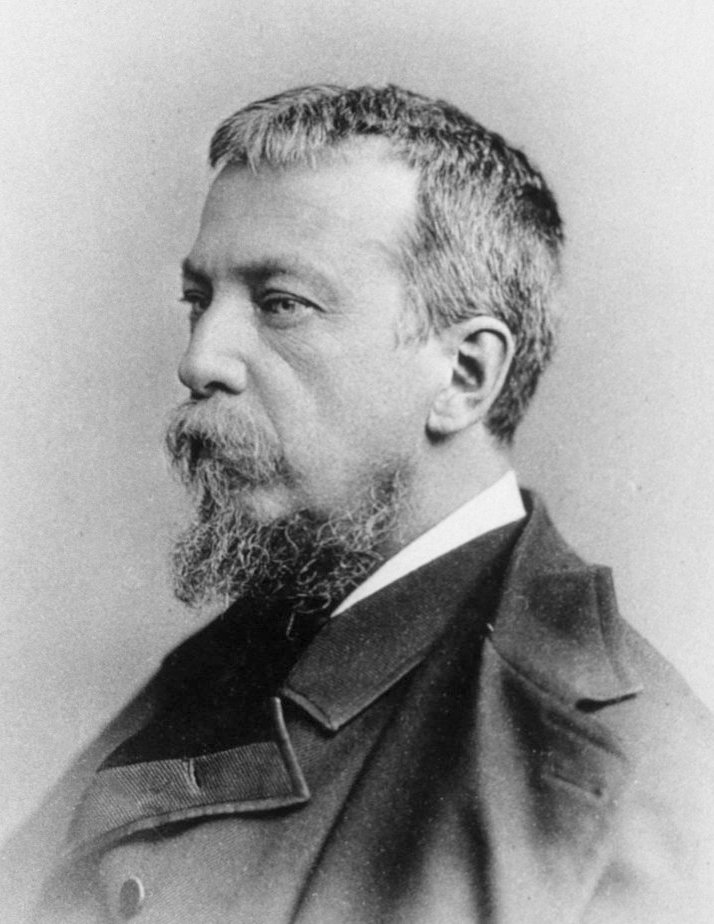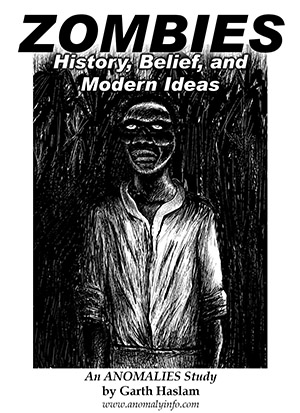1850~1910: Dr. S. Weir Mitchell's Strange Encounter
Dr. Silas Weir Mitchell [1829-1914] was an extremely well-known physician during the 19th century in the city of Philadelphia, Pennsylvania, in the United States, and a story is told of a very strange event that happened to him one night.

Dr. Silas Weir Mitchell [Larger version here]
As the story is usually told, it was a Winter evening and Dr. Mitchell had fallen asleep in a chair after a long day in surgery. Awakened by the bell, he found a thin, shivering girl clutching a threadbare shawl around her shoulders on his doorstep. She begged him to come help her mother who, the girl explained, was very ill. Dr. Mitchell gathered his equipment and then followed the girl through the snowy night to an old tenement, and then upstairs.
The girl's mother turned out to be a former house servant of Dr. Mitchell's. He immediately recognized the signs of pneumonia, and sent for the medicines needed to save her. He then made her as comfortable as possible, and congratulated her on having such a dutiful daughter.
At this, the woman looked surprised. Her daughter, she informed the doctor, had died a month previous. The woman pointed to her dead daughter's shoes and shawl that were in a little cupboard. Dr. Mitchell inspected the shawl; it was undoubtedly the same he had seen the girl wearing earlier, but was dry and warm... it could not have possibly been out in the snow that night. The girl that had led him to the woman was nowhere to be found.
A Strange History
Dr. S. Weir Mitchell was a doctor specializing in neurology in Philadelphia in the 19th century, who was born Feb. 15, 1829, and died Jan. 4, 1914. He advocated rest from work as a cure for many health issues, and also wrote popular books of fiction and poetry... and he was, as I said, well-known in Philadelphia, but also throughout the rest of the United States. I've set the possible date for this event as between 1850, which is when he first started to work as a physician, and 1910. I'll explain the 1910 date in a moment.
The tale of the dead child that visited him currently exists in a variety of versions, but the basic story remains the same: the doctor is visited by the child, led or directed to the sick woman, and then proof of the child's previous death is discovered. That such a story would take the name of a very popular doctor to authenticate itself would not be a big surprise, and this is what I at first thought had happened. I suspected this mainly because the earliest I could find an account of the story was in an issue of Reader's Digest from 1938, twenty-four years after Dr. Mitchell's death. Another warning sign for me was that Dr. Mitchell himself actually died after a bout of pneumonia, the same illness the woman in the story suffered from... and possibly another reason Dr. Mitchell's name would have been attached to the story after the fact. In short, the idea that Dr. Mitchell's name was added to a popular story after his death would be a simple explanation for why I found no evidence of the event previous to 1938.
But the actual origins of the story are far stranger than I imagined; as it turns out, the first person to tell the story of the child's visit was, in fact, Dr. S. Weir Mitchell himself... and yet, it may not be a true account. Let me explain.
Credit for the discovery of this must go to Jan Harold Brunvand, famous for his studies of stories that change form to match local expectations, tales that are commonly called "urban legends." In his own study of the Mitchell ghost story, Brunvand discovered evidence from a variety of sources that Dr. Mitchell had told a variation of the original story at a medical meeting at least once, and that this fact was remembered by people who had been present at the meeting as late as 1949 (thirty-five years after the doctor's death). So it was from Dr. Mitchell's own accounting that the story had spread out, and eventually been published... and yet, the story was not featured in biographies of Dr. Mitchell, nor in his personal writings.
Well... not directly.
Confessions?
In 1910, Dr. Mitchell published a fictional novel entitled Characteristics, which was presented in the form of a series of conversations among friends. At one point in the novel, the conversation turns to the subject of ghost stories... and the lead character of the novel tells of an odd experience of a friend of his:
"'It is dangerous to tell a ghost-story nowadays,' I returned. 'A friend of mine once told one in print out of his wicked head, just for the fun of it. It was about a little dead child who rang up a doctor one night, and took him to see her dying mother. Since then he has been the prey of collectors of such marvels. Psychical societies write to him; anxious believers and disbelievers in the supernatural assail him with letters. He has written some fifty to lay this ghost. How could he predict a day when he would be taken seriously?' "
Given the obvious similarity between the tale related in this passage and the story of the child and mother that Mitchell himself told, the conclusion seems obvious... Dr. Mitchell lied when he told the story, likely because he didn't think the story would be taken seriously, as implied in the paragraph above.
But the story took on a life of its own, and now continues to be told of the late Dr. Mitchell, ironically being the only 'fact' that many modern people now know of his influential and dynamic life.
Anomalies -- the Strange & Unexplained, as well as my other website -- Monsters Here & There -- are supported by patrons, people like you! All new Anomalies articles are now posted for my patrons only, along with exclusive content made just for them. You can become a patron for just $1 a month!
|








